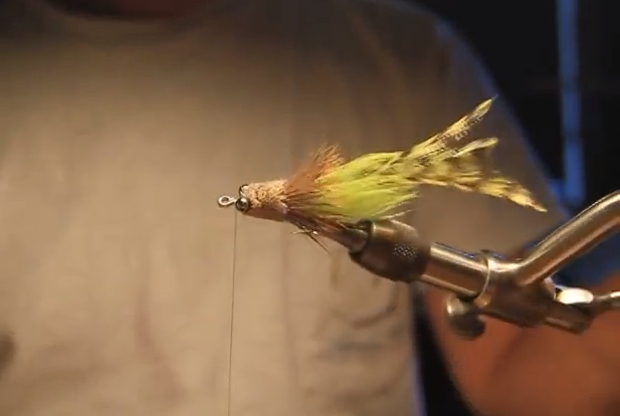Captain Paul Fisicaro of Strip Strike Charters, Marathon, Florida Keys illustrates how to tie a spun deer hair fly and more importantly, how to shave-shape it.
Properly spinning and shave-shaping deer hair is one of the most challenging in fly tying, but the fish attracting successes of patterns utilizing it make it an imperative to learn “how.” Patterns using the spun deer hair technique are generally large and also fairly involved, which tends to intimidate many tyers.
There are different types of “deer hair” such as elk, moose, deer and caribou.
Elk hair is coarse, straight and hollow and is usually light in colo – making the patterns more visible. Elk hair is buoyant and will keep your hair patterns riding high on the water’s surface. Hair length is generally between 1- to 3-inches long.
Moose hair is not hollow except at the base and is straight, dense and approximately 2- to 4-inches in length. It’s is mostly for tails because it is stiff, durable and doesn’t flare much. Moose hair doesn’t flare well and because of thatnot ideal for patterns calling for hair spinning.
Caribou is a very fine, hollow hair that will spin very easily. This hair is a great tool for people learning how to spin hair, as well as for very small spun patterns. Caribou hair is typically a medium to dark brown color and approximately 1- to 2- inches in length. The one drawback to using Caribou hair is that it is not as straight as deer or elk.
Deer hair is the number one choice for spinning popper bodies and Muddler heads. Deer hair is hollow and ranges in texture from fine to coarse – ideal for spinning hair. Deer hair varies in color from light to medium-dark tan. It’s length over 1- and up to 3-inches
Always buy clean, quality deer hair that’s long enough to spin. Also be sure to use a strong thread. Weak thread will break off and thread that’s too rigid can make controlling the hair difficult. Danville Flat Waxed Nylon Thread is generally considered one of the best for spinning hair. Finally, people often confuse spinning and flaring, which are two separate techniques. When hair is “spun” it goes around the hook shank; when hair is “flared” it stays in place.
Spinning Deer hair – Making a spun deer hair head with collar
[youtube id=”mldeklCs71c” width=”620″ height=”360″]








Captain Paul is awesome.